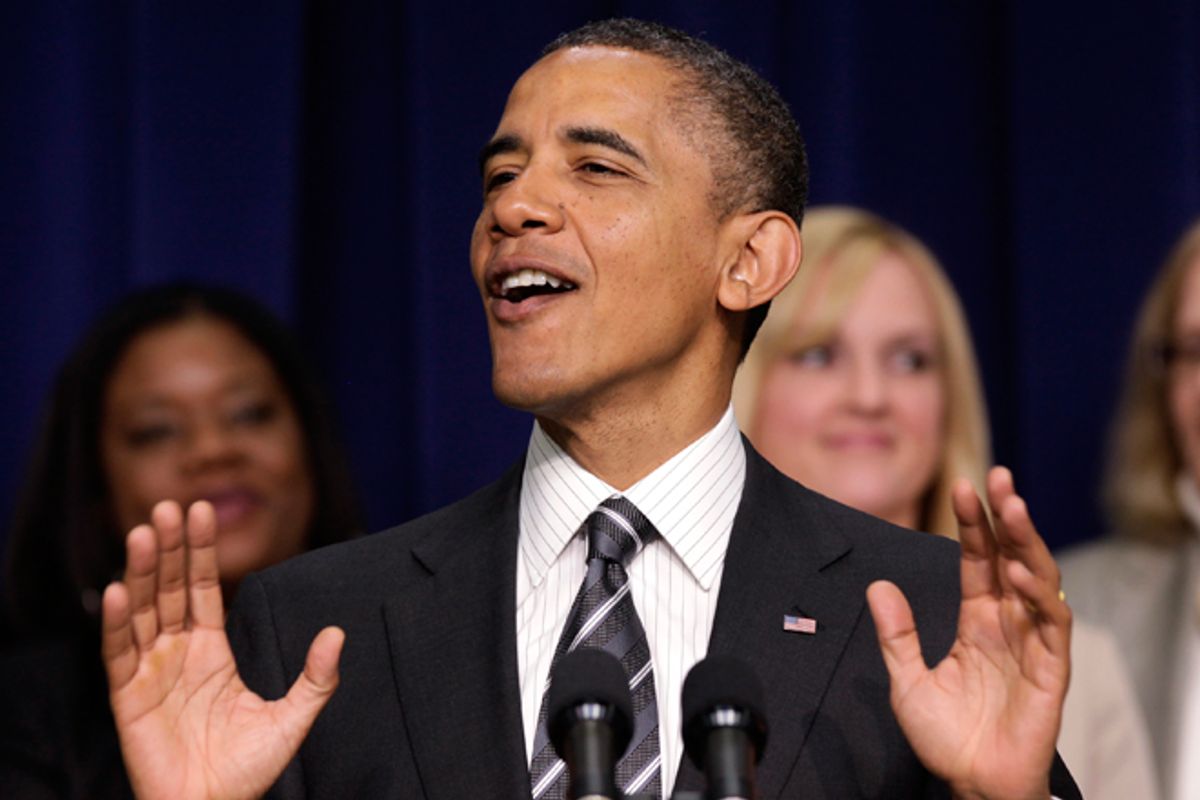“Bafflement” might be a good way of describing the collective reaction of Democrats at 1 p.m. yesterday, when Gallup unveiled fresh daily tracking poll numbers that put Mitt Romney 7 points ahead of President Obama. But “panic” might have been applicable in some quarters too.
A day earlier, Gallup had shown the GOP nominee’s edge jumping to 6 points, which had been scary enough, but Democrats had been able to tell themselves it was a fluke – statistical noise that would quickly be corrected. But now his lead was expanding further. And this wasn’t some easy-to-dismiss Rasmussen poll either; it was Gallup, the gold standard name in political polling. No other survey was showing anything near a 7-point national lead for Romney, but it seemed to raise the possibility that something bad for Obama was stirring in the electorate.
Then came the reassurance.
First, there was the release of two new NBC/Marist swing state polls, in Wisconsin and Iowa. If Romney is really opening up anything approaching a lead like Gallup is showing, he’d be ahead in these states. Instead, NBC/Marist put Obama up 8 points in Iowa, 51 to 43 percent, and 6 in Wisconsin, 51 to 45. Then came a lengthy post from numbers guru Nate Silver, who detailed Gallup’s erratic history in past elections and potential problems with its likely voter model, concluding that “it’s much more likely that Gallup is wrong and everyone else is right than the other way around.”
Not surprisingly, the Obama campaign was quick to send Silver’s piece around to reporters, while the DNC promoted the NBC/Marist numbers. And with that, Democrats ended the day satisfied that the world wasn’t collapsing around them. But that doesn’t mean they shouldn’t be uneasy.
The best indicator of where the horse race stands remains the Real Clear Politics average of polls, which puts Romney ahead by a point. For nearly two weeks now, since a few days after the first debate in Denver, Romney has enjoyed some kind of lead in the RCP average.
But things are a little different when you look at the battleground states. The new Iowa and Wisconsin numbers could be outliers in their own right, overstating Obama’s edge in each state. But the president has consistently led in both states. Other surveys have shown Obama’s Wisconsin lead narrowing this week, but it remains true that no Republican has carried it since 1988. And, as Nate Cohn detailed a few days ago, there’s evidence that Obama has an extra leg-up in Iowa.
Elsewhere, Obama continues to perform impressively in Ohio (where, again, Romney has made up some ground) and to hold his own in Virginia, New Hampshire and Colorado, where the race seems essentially tied. He has also apparently slipped back in Florida and in North Carolina, two traditionally Republican states he carried in 2008. There are mixed signals out of Nevada, a state where polling may not be that reliable.
If Obama’s edge in Wisconsin, Iowa and Ohio holds, then it’s very hard to see him losing this election. Look at it this way: If you give Romney Colorado, Florida, North Carolina and Virginia, that will leave him with 257 electoral votes. As Harry Enten explained in a terrific post earlier this week, Romney would have a few paths to victory at that point, but they would be dependent on winning either Ohio or Wisconsin and one other states (Iowa, New Hampshire or Nevada). There’s also, for what it’s worth, the 269-269 tie scenario, which Romney could force by winning Iowa and Nevada.
What we haven’t seen yet is any non-Gallup national polling since the second presidential debate on Tuesday. It remains to be seen if Obama received any kind of a national bump from his strong performance, and if that bump will trickle down to the swing states. The NBC/Marist polls included one day of calls after the debate and found no immediate movement, but more evidence will become available in the coming days.
The biggest problem for Obama, as I wrote yesterday, continues to be his basic vulnerability on the economy. There are very encouraging signs that the economy really is turning the corner, but there will probably be a lag before most voters really feel it. So Romney’s recitation of dire statistics continues to be effective, which helps explain why voters judged him the clear winner of Tuesday’s debate on the subject of the economy.
Right now, Obama seems to be in decent shape, basically tied in the national horse race but with a genuine edge in the Electoral College. But economic anxiety is still real, and if it ultimately moves 1 or 2 points worth of voters to Romney’s column, that could blow the whole thing up.



Shares